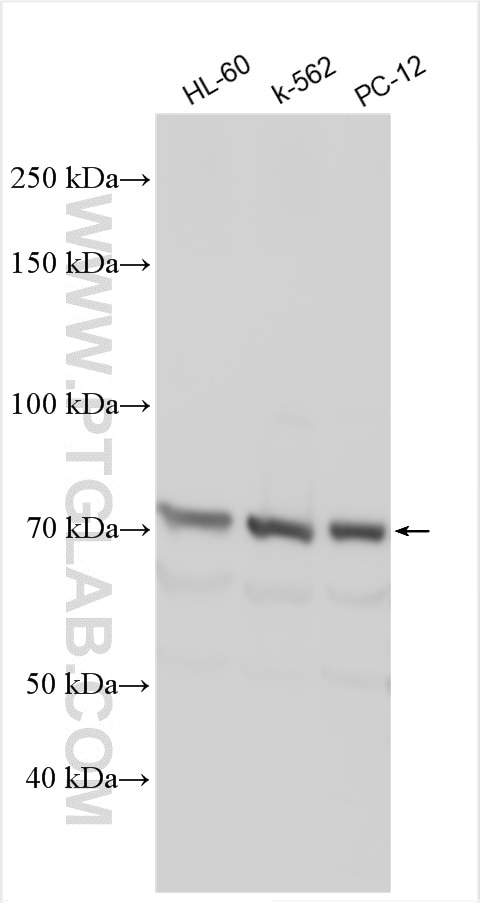ABCG8 Polyklonaler Antikörper
ABCG8 Polyklonal Antikörper für WB, ELISA
Wirt / Isotyp
Kaninchen / IgG
Getestete Reaktivität
human, Ratte und mehr (1)
Anwendung
WB, ELISA
Konjugation
Unkonjugiert
Kat-Nr. : 24453-1-AP
Synonyme
Geprüfte Anwendungen
| Erfolgreiche Detektion in WB | HL-60-Zellen, K-562-Zellen, PC-12-Zellen |
Empfohlene Verdünnung
| Anwendung | Verdünnung |
|---|---|
| Western Blot (WB) | WB : 1:500-1:2000 |
| It is recommended that this reagent should be titrated in each testing system to obtain optimal results. | |
| Sample-dependent, check data in validation data gallery | |
Veröffentlichte Anwendungen
| WB | See 2 publications below |
Produktinformation
24453-1-AP bindet in WB, ELISA ABCG8 und zeigt Reaktivität mit human, Ratten
| Getestete Reaktivität | human, Ratte |
| In Publikationen genannte Reaktivität | Maus, Ratte |
| Wirt / Isotyp | Kaninchen / IgG |
| Klonalität | Polyklonal |
| Typ | Antikörper |
| Immunogen | ABCG8 fusion protein Ag19879 |
| Vollständiger Name | ATP-binding cassette, sub-family G (WHITE), member 8 |
| Berechnetes Molekulargewicht | 673 aa, 76 kDa |
| Beobachtetes Molekulargewicht | 70 kDa |
| GenBank-Zugangsnummer | BC113657 |
| Gene symbol | ABCG8 |
| Gene ID (NCBI) | 64241 |
| Konjugation | Unkonjugiert |
| Form | Liquid |
| Reinigungsmethode | Antigen-Affinitätsreinigung |
| Lagerungspuffer | PBS with 0.02% sodium azide and 50% glycerol |
| Lagerungsbedingungen | Bei -20°C lagern. Nach dem Versand ein Jahr lang stabil Aliquotieren ist bei -20oC Lagerung nicht notwendig. 20ul Größen enthalten 0,1% BSA. |
Hintergrundinformationen
ABCG8(ATP-binding cassette sub-family G member 8) and ABCG5(ATP-binding cassette protein G5) are members of the ABC transporter family and are half-type ABC transporters, which consist of six transmembrane helices and one nucleotide-binding domain. ABCG5 and ABCG8 form a heterodimer (ABCG5/ABCG8). Mutations in either ABCG5 or ABCG8 cause a genetic disorder, sitosterolemia. Patients with sitosterolemia show high plant sterol levels and develop hypercholesterolemia and atherosclerosis at a young age.(PMID: 36839356)
Protokolle
| PRODUKTSPEZIFISCHE PROTOKOLLE | |
|---|---|
| WB protocol for ABCG8 antibody 24453-1-AP | Protokoll herunterladen |
| STANDARD-PROTOKOLLE | |
|---|---|
| Klicken Sie hier, um unsere Standardprotokolle anzuzeigen |
Publikationen
| Species | Application | Title |
|---|---|---|
Naunyn Schmiedebergs Arch Pharmacol Molecular mechanism of geniposide against ANIT-induced intrahepatic cholestasis by integrative analysis of transcriptomics and metabolomics | ||
Drug Des Devel Ther Baolier Capsule's Secret Weapon: Piperine Boosts Cholesterol Excretion to Combat Atherosclerosis |


